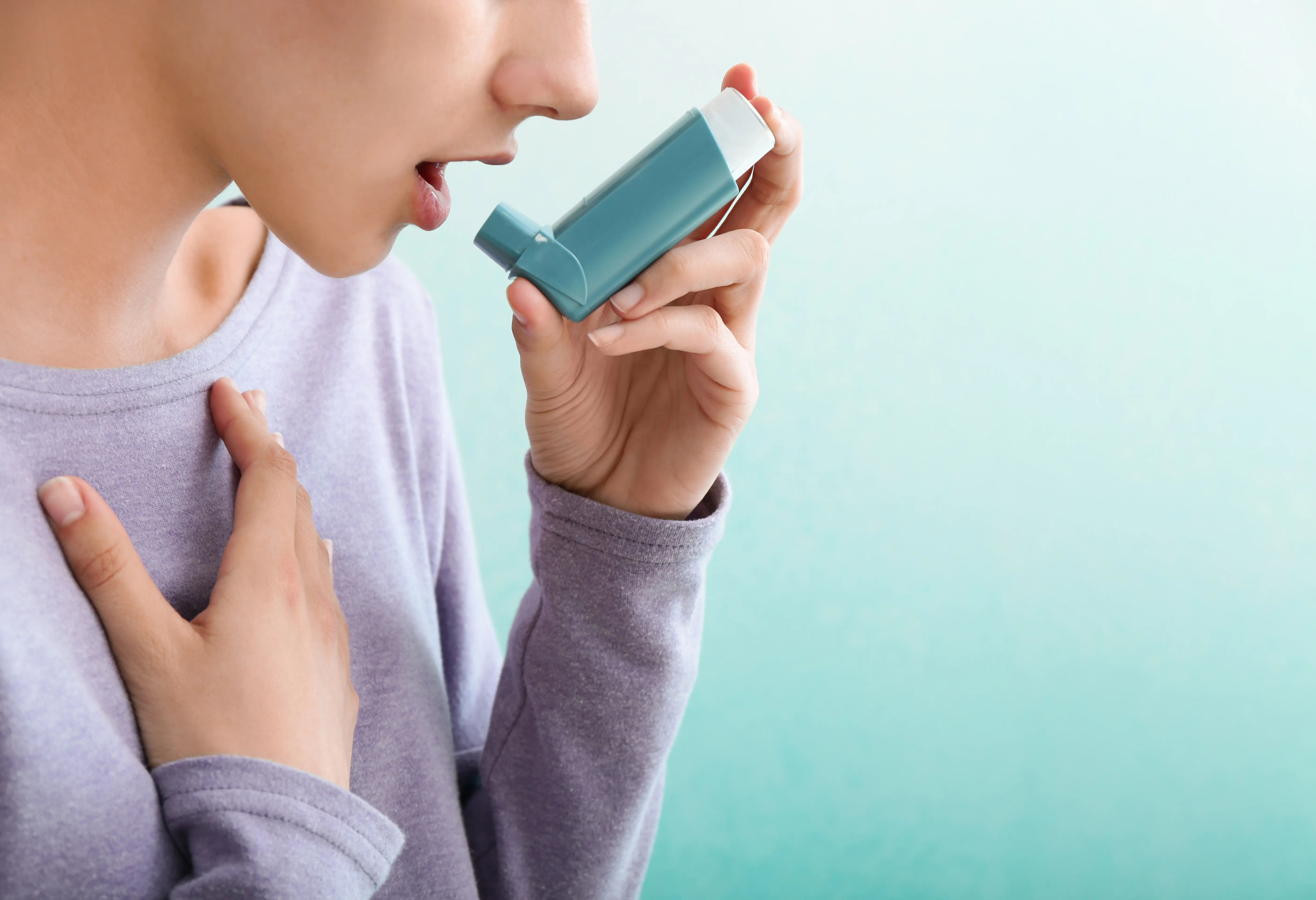Guide to Asthma In Adults And Children
Get a comprehensive guide to asthma in adults and children. Learn about symptoms, triggers, diagnosis, and effective management strategies to live a healthier life.

Written by Dr. Rohinipriyanka Pondugula
Reviewed by Dr. Vasanthasree Nair MBBS
Last updated on 22nd Sep, 2025

Introduction
Asthma is a common but often misunderstood chronic respiratory condition that affects millions of adults and children worldwide. It causes your airways to become inflamed and narrow, making breathing a conscious effort rather than an automatic reflex. This guide demystifies asthma, offering a clear path from understanding its causes to mastering daily management. Whether you're newly diagnosed, a concerned parent, or looking to support a loved one, we'll cover the essential signs, symptoms, and triggers to watch for. We'll delve into the latest diagnostic methods, effective treatment options, and practical strategies for creating an asthma-action plan that works for you or your child. Our goal is to empower you with knowledge, transforming anxiety into control and ensuring that asthma doesn't hold you back from living a full, active life. Let's breathe easier together.
What is Asthma? Understanding the Condition
Asthma is a chronic disease that affects the bronchial tubes, the airways that carry air in and out of your lungs. When you have asthma, these airways are chronically inflamed, making them overly sensitive to various triggers.
How Do Normal Airways Work?
In a healthy respiratory system, the airways are clear and relaxed. When you breathe, air moves freely through the windpipe (trachea), which branches into smaller tubes called bronchi and even smaller bronchioles, finally reaching tiny air sacs (alveoli) where oxygen enters the bloodstream.
What Happens During an Asthma Attack?
When an exposed individual encounters a trigger, three key reactions occur, culminating in an asthma attack:
1) The muscles around the airways tighten (bronchospasm).
2) The lining of the airways becomes increasingly swollen and inflamed.
3) The airways produce thick mucus.
This combination of factors significantly narrows the airway, making it difficult for air to pass through. This results in the characteristic wheezing sound, coughing, and the terrifying sensation of being unable to catch your breath.
Consult Top Specialists
Recognizing the Symptoms: Signs in Adults vs. Children
The core symptoms of asthma are similar across all ages, but their presentation can differ, especially in young children who cannot articulate what they're feeling.
Common Asthma Symptoms Everyone Should Know
The most prevalent signs include:
Wheezing: A whistling or squeaky sound when you breathe, especially when exhaling.
Coughing: A persistent cough that may be worse at night or early in the morning. An asthma cough is often dry and hacking.
Shortness of breath: Feeling out of breath, like you can't get enough air into your lungs.
Chest tightness: A feeling of pressure or squeezing in the chest.
Unique Signs of Asthma in Young Children
Infants and toddlers may show different signs, such as:
Rapid or noisy breathing.
Frequent coughing during play or laughter.
Less energy during activities, getting tired easily.
Difficulty feeding or grunting during feeding.
A soft, whistling sound when breathing in (often a sign of severe airway obstruction in infants).
Common Asthma Triggers: Identifying Your Personal Culprits
A crucial step in management is identifying and avoiding your personal asthma triggers. What causes a reaction in one person may not affect another.
Allergens (Pollen, Dust Mites, Pet Dander)
These are common culprits. Seasonal pollen from trees, grasses, and weeds can cause havoc. Indoor allergens like dust mites (thriving in bedding and upholstery), cockroach droppings, and mold are perennial threats. Pet dander from cats and dogs is also a very common trigger.
Irritants (Smoke, Pollution, Strong Smells)
Unlike allergens, these don't cause an allergic reaction but irritate the already-sensitive airways. Tobacco smoke is a major trigger. Others include air pollution, chemical fumes, strong perfumes, cleaning products, and dust.
Other Triggers (Exercise, Cold Air, Stress)
Exercise-induced bronchoconstriction (EIB) is very common, where physical exertion triggers symptoms. Cold, dry air can also cause airways to constrict. Additionally, strong emotions and stress—which can cause fast breathing (hyperventilation)—are well-known triggers for many people.
How is Asthma Diagnosed? Steps to a Formal Diagnosis
If you suspect asthma in adults or children, a proper medical diagnosis is essential. If your symptoms persist, consult a doctor online with Apollo24|7 for an initial consultation and guidance on next steps.
The Doctor's Consultation and Medical History
Your doctor will first take a detailed history, asking about your symptoms, their frequency, family history of asthma or allergies, and potential triggers you've noticed.
Lung Function Tests: Spirometry and Peak Flow
This is the gold standard. Spirometry measures how much air you can exhale and how quickly. You blow hard into a tube connected to a machine. A peak flow meter is a small, handheld device you use at home to monitor your lung function daily, helping to identify worsening asthma before symptoms become severe.
Additional Tests: Allergy Testing and FeNO
If allergies are suspected, skin prick or blood tests can identify specific triggers. A FeNO test (fractional exhaled nitric oxide) measures inflammation in your airways, helping to confirm an asthma diagnosis and monitor the effectiveness of anti-inflammatory medication.
Asthma Treatment Options: From Inhalers to Biologics
There is no cure for asthma, but it can be managed extremely effectively with medication. Treatment typically involves a two-pronged approach.
Quick-Relief Medications (Rescue Inhalers)
Everyone with asthma should have a quick-relief inhaler (e.g., albuterol). These are bronchodilators that work rapidly to relax the tightened muscles around your airways during an asthma attack, providing relief within minutes. They are not for daily use.
Long-Term Control Medications (Preventer Inhalers)
These are the cornerstone of asthma management. Taken daily, these medications (usually inhaled corticosteroids) reduce underlying inflammation in the airways, preventing symptoms and attacks from occurring in the first place. It's vital to use an asthma inhaler correctly to ensure the medicine reaches your lungs.
Understanding and Using an Asthma Action Plan
Created with your doctor, this is a personalized, written plan that is your roadmap to management. It outlines:
Green Zone (Doing Well): What maintenance drugs to take daily.
Yellow Zone (Caution): What to do when symptoms appear or peak flow drops.
Red Zone (Medical Alert): What steps to take and when to seek emergency help during a severe attack.
Daily Management and Living Well with Asthma
Effective management goes beyond medication.
Creating an Asthma-Friendly Home Environment
Use allergen-proof mattress and pillow covers, wash bedding weekly in hot water, vacuum regularly with a HEPA filter, and maintain low humidity to combat dust mites and mold. Consider investing in a good air purifier for asthma sufferers, especially for bedrooms.
Exercise and Asthma: Staying Active Safely
With proper management, most people with asthma can and should exercise. The key is to control underlying inflammation with a preventer inhaler. Using a rescue inhaler 15 minutes before exercise can often prevent EIB. Activities like swimming, walking, and yoga are often well-tolerated.
The Importance of Regular Monitoring and Check-ups
Asthma can change over time. Regular follow-ups with your doctor are essential to assess your control, adjust medication dosages, and update your action plan. Apollo24|7 offers convenient home collection for tests like allergy panels or FeNO tests to help monitor your condition without frequent lab visits.
Asthma in Children: A Parent's Guide
Managing asthma in children requires extra vigilance and communication.
How Childhood Asthma Differs from Adult Asthma
Children's airways are smaller, so even slight inflammation can cause significant symptoms. They also have more frequent colds and respiratory infections, which can exacerbate asthma. It can be harder to diagnose, as lung function tests are difficult to perform on very young children.
Managing Asthma at School and During Play
Ensure the school nurse and teachers have a copy of your child's asthma action plan, know how to recognize symptoms, and have access to their rescue inhaler. Encourage your child to participate in activities but to speak up if they feel symptoms coming on.
Will My Child Outgrow Their Asthma?
It's a common question. While some children see their symptoms disappear or lessen significantly as they grow older, the underlying tendency for inflamed airways often remains. Symptoms can sometimes return in adulthood. Never stop medication without consulting your doctor.
When to Seek Emergency Help for an Asthma Attack?
Know the signs of a severe attack that requires immediate emergency care:
Rapid worsening of shortness of breath or wheezing.
No improvement after using a quick-relief inhaler.
Shortness of breath even while resting.
Inability to speak in full sentences.
Lips or fingernails turning blue (cyanosis).
This is a medical emergency. Call for an ambulance immediately.
Conclusion
Living with asthma, whether as an adult or caring for a child with the condition, is a journey of education and proactive management. While it's a chronic disease, it is also highly manageable. By understanding your triggers, adhering to a prescribed treatment plan, and maintaining open communication with your healthcare provider, you can achieve excellent control. Remember, the goal is not just to treat attacks but to prevent them from happening altogether, allowing you to run, play, work, and sleep without interruption. You have the power to take control of your respiratory health. If your symptoms are not well-controlled or you have questions about your current plan, don't hesitate to book a physical visit to a doctor with Apollo24|7 for a comprehensive evaluation and a refreshed strategy for breathing freely.
Consult Top Specialists
Consult Top Specialists

Dr. Chethan T L
General Physician/ Internal Medicine Specialist
5 Years • MBBS, MD, DNB (General Medicine)
Bengaluru
Apollo Medical Center, Marathahalli, Bengaluru

Dr. Rajib Ghose
General Physician/ Internal Medicine Specialist
25 Years • MBBS
East Midnapore
VIVEKANANDA SEBA SADAN, East Midnapore

Dr P Jagadeesha Chandra
General Physician/ Internal Medicine Specialist
37 Years • MBBS, MD
Bengaluru
Apollo Hospitals Jayanagar, Bengaluru

Dr. Aakash Garg
Gastroenterology/gi Medicine Specialist
12 Years • MBBS, DNB (Medicine), DrNB (Gastroentrology).
Bilaspur
Apollo Hospitals Seepat Road, Bilaspur
(150+ Patients)

Dr. Nirmal Mathew Alex
General Physician/ Internal Medicine Specialist
17 Years • MBBS, MD(general medicine)
Angamaly
Apollo Hospitals Karukutty, Angamaly
(50+ Patients)
More articles from Asthma
Frequently Asked Questions
1. What is the main difference between adult-onset and childhood asthma?
Childhood asthma is often linked to allergies and may improve or disappear with age. Adult-onset asthma is more common in women, often triggered by factors like hormones, allergies, or occupational exposures, and tends to be more persistent.
2. Can you suddenly develop asthma as an adult?
Yes, this is known as adult-onset asthma. It can be triggered by a significant illness, a major life change, hormonal shifts (like menopause), or exposure to new irritants or allergens in your environment or workplace.
3. What are the best natural ways to manage asthma symptoms?
While medication is essential, complementary strategies can help. These include breathing exercises (like the Buteyko method), maintaining a healthy weight, eating an anti-inflammatory diet rich in fruits and vegetables, and ensuring adequate Vitamin D levels. Apollo24|7 offers convenient home collection for tests like vitamin D to check your levels. Always discuss any new strategies with your doctor first.
4. Is it safe to use a steroid inhaler every day?
Yes. The steroids in inhalers (corticosteroids) are anti-inflammatory medicines, not the same as anabolic steroids used for building muscle. They are delivered directly to the lungs in very low doses, making them safe for long-term daily use and critically important for controlling airway inflammation.
5. How can I tell if my child's asthma is well-controlled?
Signs of good control include: they can participate in normal play and activities without symptoms, they sleep through the night without coughing or wheezing, they rarely need their rescue inhaler (less than twice a week), and they have no missed school days due to asthma.



.webp)
